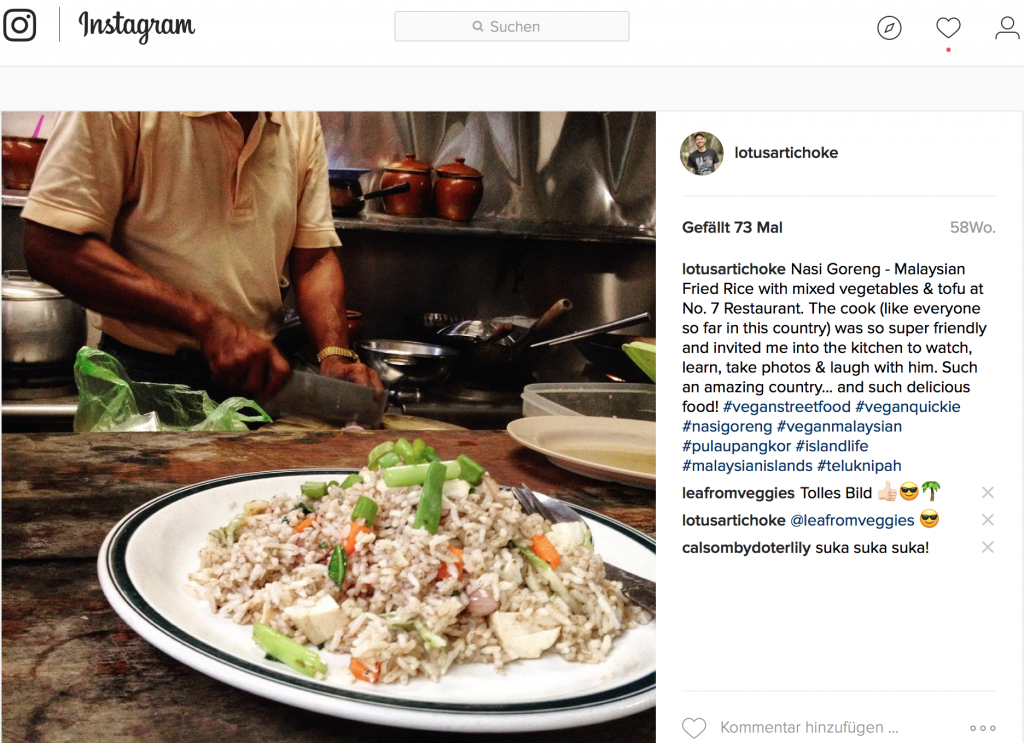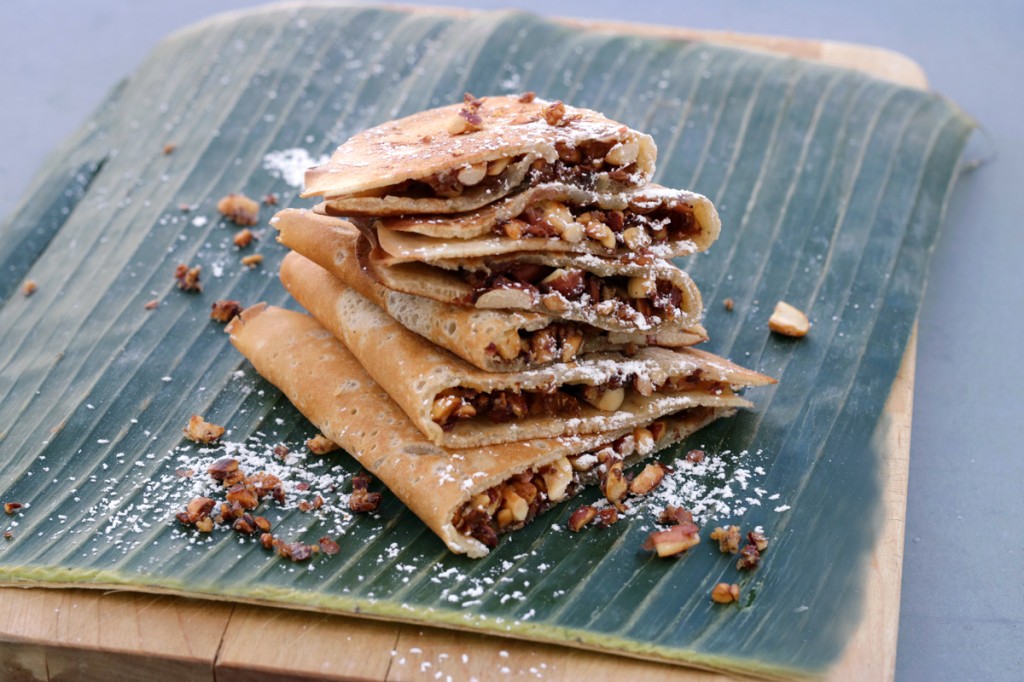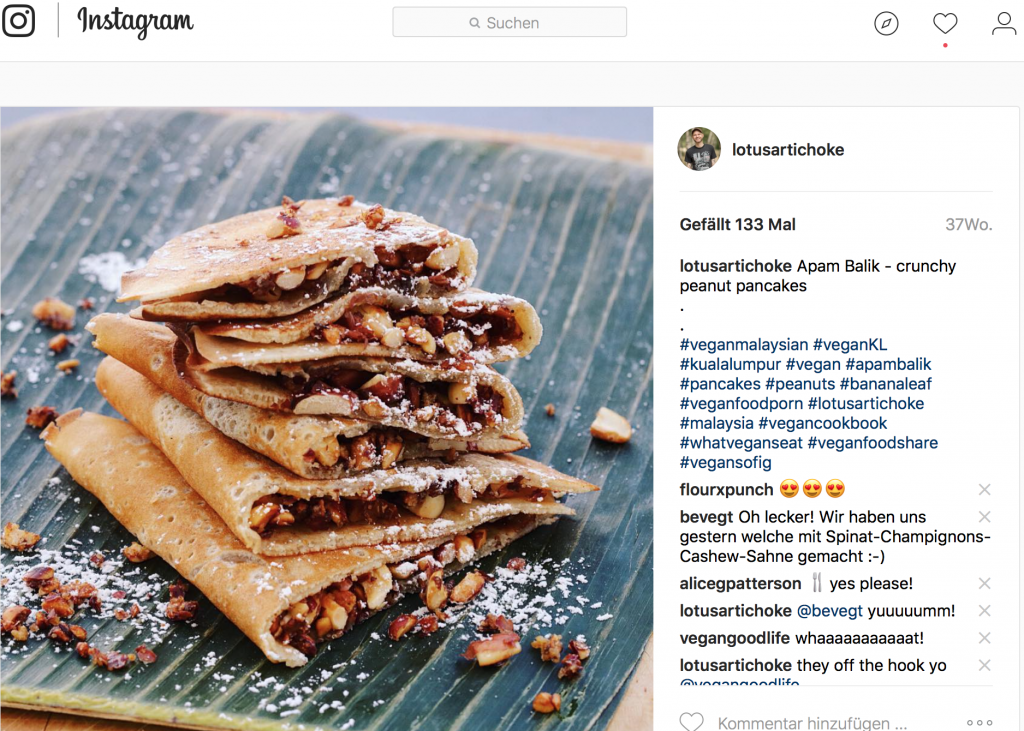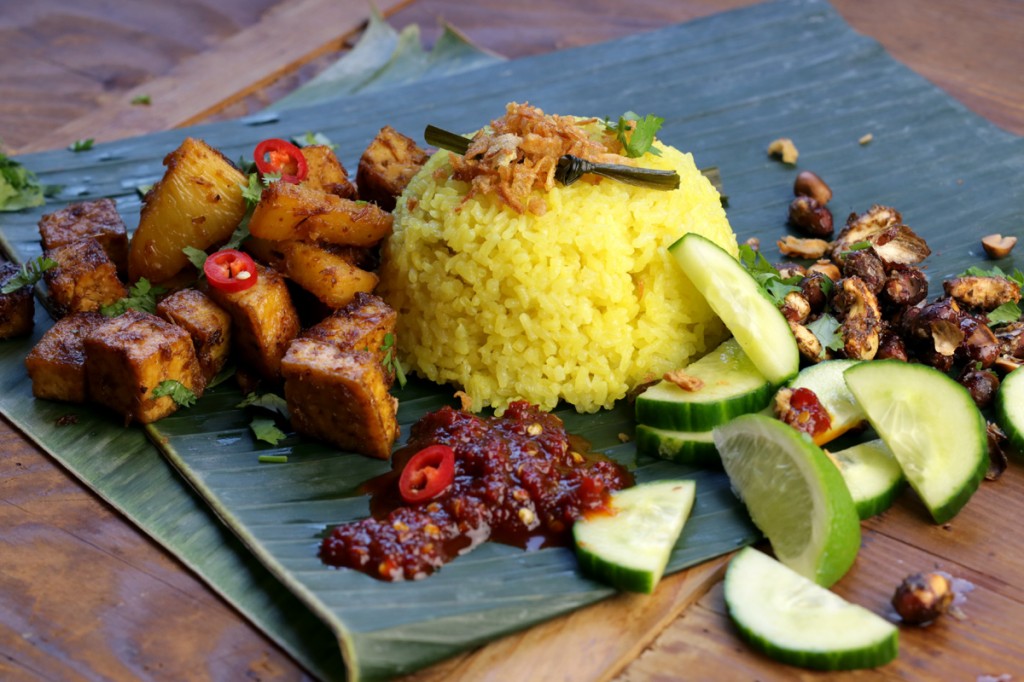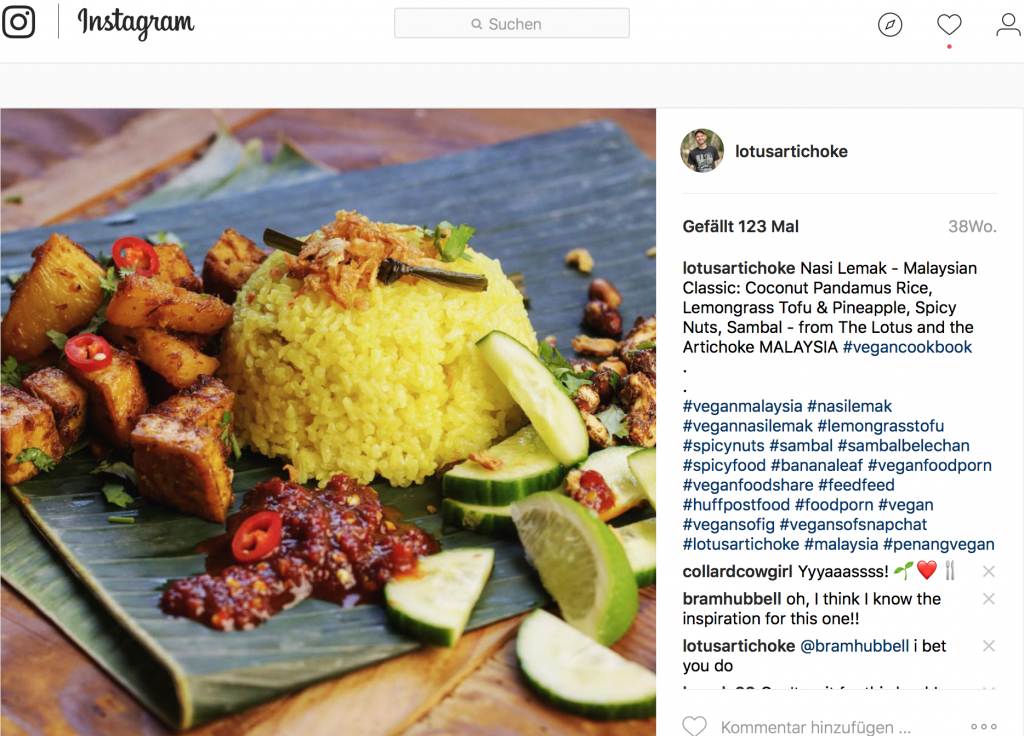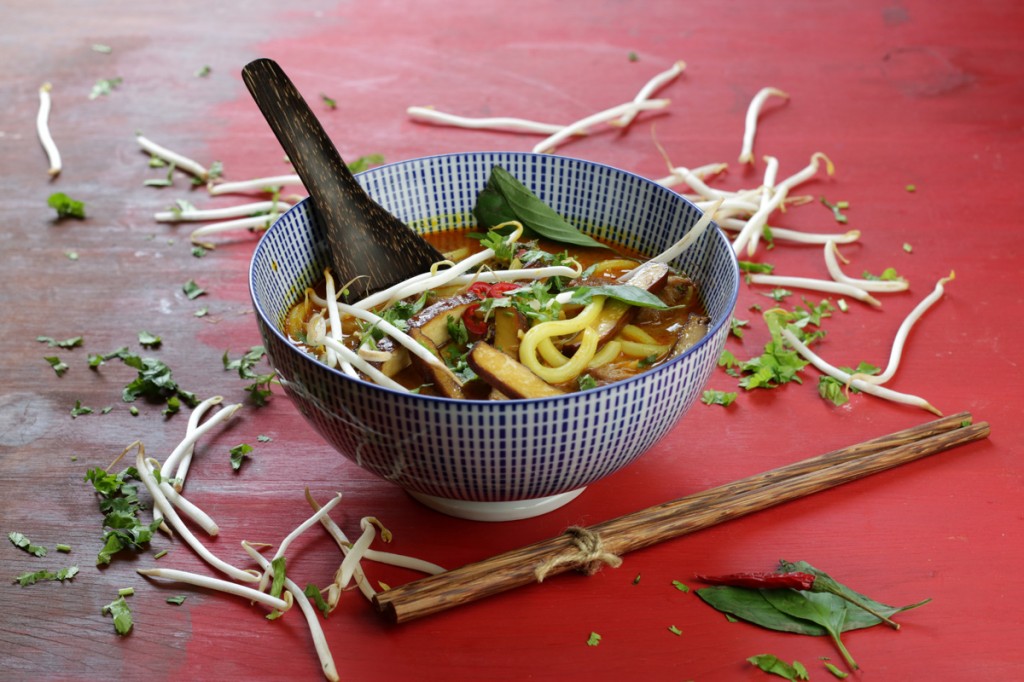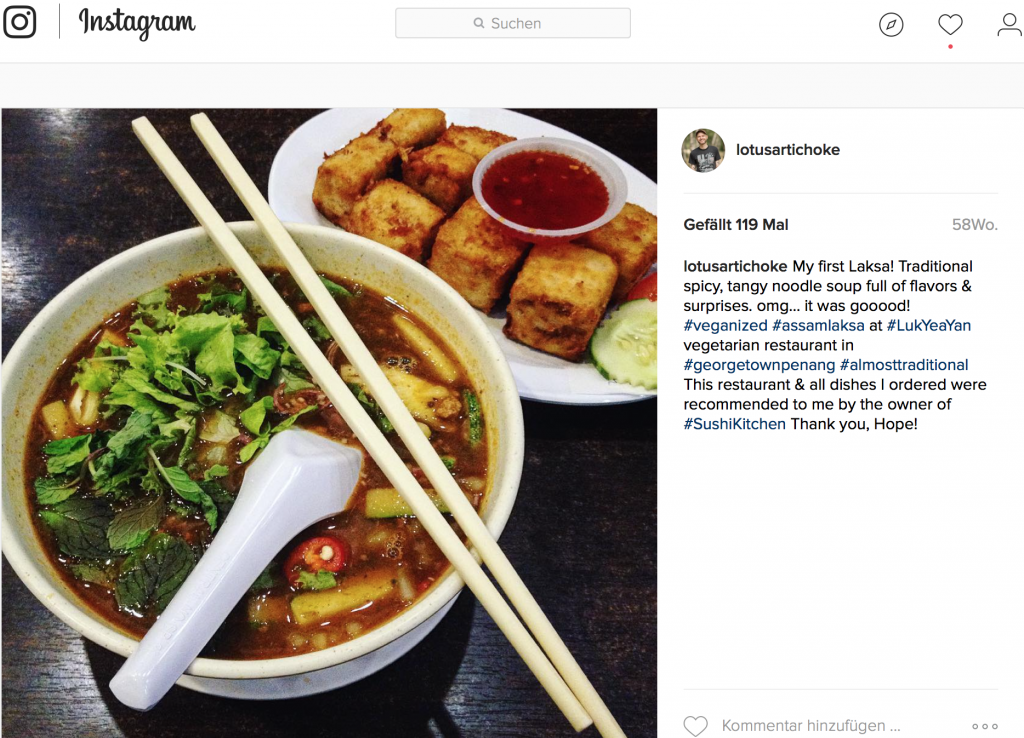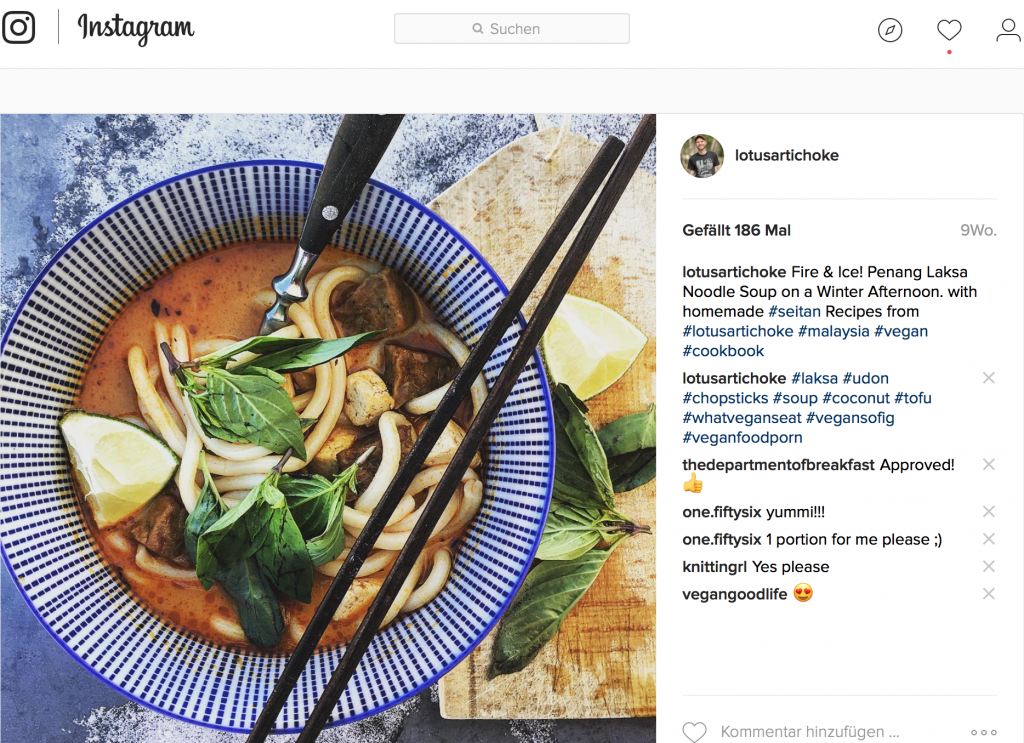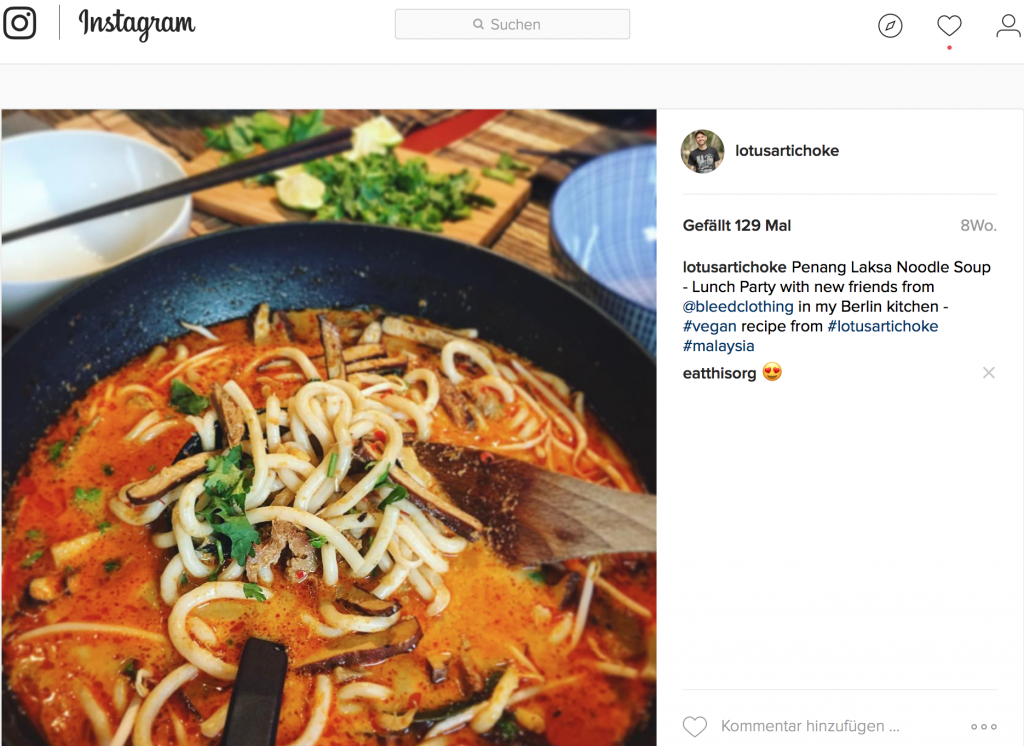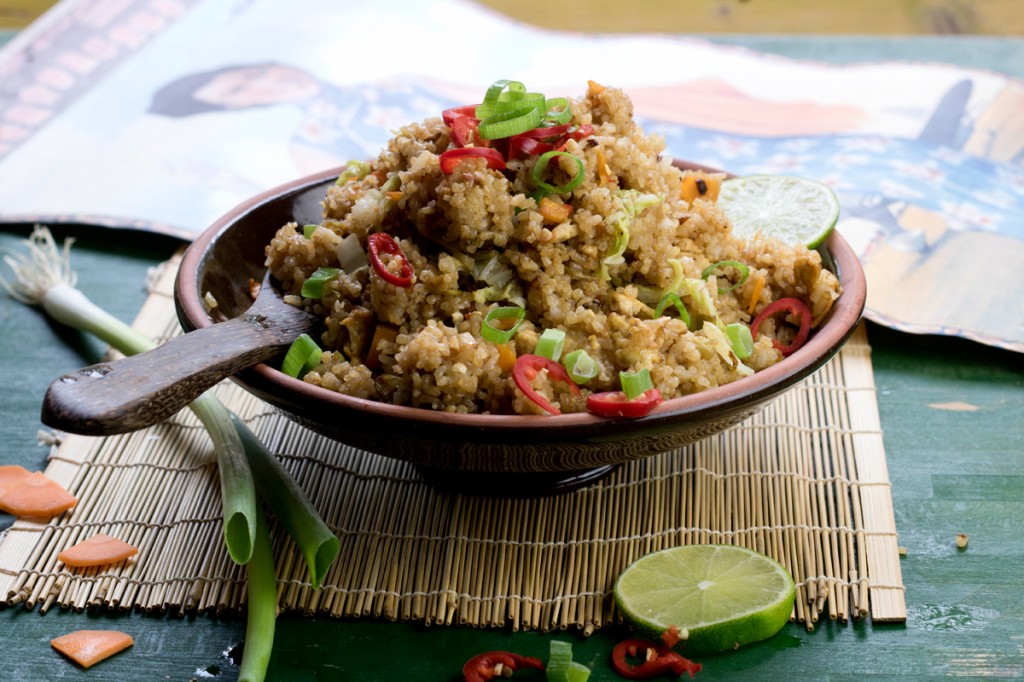
I couldn’t even tell you how many times I had Nasi Goreng while I was in Malaysia.
It was definitely often. Like, really often. Not only is this traditional vegetable fried rice dish usually totally delicious, it’s also usually easy to find and (with little to no effort) a great vegan option.
Pretty much everywhere I went in the five weeks in Malaysia, this dish was on the menu or easy to order at almost any restaurant. Especially out of the big cities and in the countryside – and particularly on the islands and beaches – this is a vegan/vegetarian stand-by that is never hard to find.
(By the way, based on my travels, this is true for most of Southeast Asia, including Cambodia, Laos, Thailand, and Myanmar… but the dish is found under other names and with local flavors.)
This becomes an almost daily meal, if vegan options are limited.
On Pulau Pangkor, there were two food places (more shacks than restaurants) that served fantastic Nasi Goreng and vegetable fried rice. And in Borneo, staying in the Permai rainforest, the local restaurant and the nearby food court had vegetable fried rice, or Nasi Goreng. There were also many breakfast or lunch buffets at hotels and restaurants that had rice dishes like this. Contrarily, when in Penang and Kuala Lumpur I was usually so blown away by other vegan choices that I didn’t eat Nasi Goreng as often.
Nasi Goreng’s flavors and textures forge powerful memories for anyone who’s been to Malaysia or Indonesia – or even just a Malaysian or Indonesian restaurant – whether vegan, vegetarian, or neither.
Just as with so many classic recipes – from region to region and family to family this dish is made a million different ways. This is mine… inspired by so many excellent meals on my adventures.
When I created this recipe for the Malaysia cookbook, I made sure to hit all the best, unique flavors in a good Nasi Goreng:
Fresh galangal root (or ginger), lime juice, spicy chili, and a thin, tangy sauce provided by the mix of Shoyu soy sauce, vinegar, and citrus zest. I also round out the savory flavors with some sweetness. Traditionally in Malaysia, this dish would be served with just a bit of chopped vegetables (and way more rice). For my recipe, I’ve got a lot of the good stuff, included the crumbled tofu – which, by the way, replaces scrambled egg – sometimes found in traditional Nasi Goreng.
By the way, I have many similar recipes inspired by other travels and other countries and cuisines – including: Cambodian Fried Rice, Mexican Magic Rice, and Vegetable Fried Rice from my World, Mexico, and Sri Lanka vegan cookbooks. After you’ve tried my Nasi Goreng, check out the other recipes and decide which country’s classic fried rice is your favorite.
Nasi Goreng
traditional vegetable fried rice
recipe from The Lotus and the Artichoke – MALAYSIA available in English & German
serves 2 to 3 / time 40 min +
- 3.5 oz (100 g) firm tofu
- 1 cup (190 g) broken jasmine rice or short grain brown rice
- 1/2 tsp sea salt
- 1 2/3 cup (400 ml) water
- 1 cup (100 g) chinese cabbage, cauliflower, broccoli or bok choy finely chopped
- 1 medium (90 g) carrot finely chopped or sliced
- 2–3 Tbs oil
- 1 tsp sesame oil optional
- 3 (50 g) spring onions chopped, separated into white ends and greens
- 1 or 2 cloves garlic finely chopped
- 1 large red chili finely chopped optional
- 1/2 in. (1 cm) fresh galangal or ginger finely chopped
- 1 tsp coriander ground
- 1/2 tsp black pepper ground
- 2 Tbs soy sauce (Shoyu)
- 1 Tbs lime juice or lemon juice
or 2 tsp rice vinegar - 1 tsp lime zest or lemon zest optional
- 1 tsp sugar or agave syrup
- 1/2 tsp sea salt
- lime slices for garnish
- Cut tofu in slabs, wrap in clean kitchen towel. Weight with heavy cutting boards to press out excess moisture. Let sit 20 min. Unwrap tofu and crumble into a bowl.
- Wash and drain rice thoroughly.
- Bring water to boil in a small pot. Add rice and salt. Stir. Return to boil. Reduce heat to low and cover. Simmer 12 to 20 min as needed. After water is absorbed, remove from heat. Fluff rice with a fork. Cover and let sit and cool, ideally an hour or more.
- Heat oil in a large wok or frying pan on medium high. Add chopped spring onion ends, garlic, chili (if using), galangal (or ginger), ground coriander, and black pepper. Fry, stirring constantly, until lightly browned, 2–3 min.
- Add chopped carrots. Fry, stirring constantly, 2–3 min. Add crumbled tofu. Mix well. Fry, stirring regularly, until tofu begins to turn golden brown, 3–5 min. Add chopped cabbage (or other vegetables). Fry, stirring constantly, until vegetables start to soften, 4–5 min.
- Whisk soy sauce, lime (or lemon) juice, zest, sugar (or agave syrup), and sea salt in a small bowl.
- Add cooked rice to frying vegetables. Mix well. Add soy sauce mix and spring onions greens. Combine well. Fry, stirring constantly until liquid has been absorbed and rice and vegetables are moderately browned, 5–7 min. Remove from heat. Cover until ready to serve.
- Serve with lime slices.
vegan recipe for Nasi Goreng from The Lotus and the Artichoke – MALAYSIA

Nasi Goreng
traditionelles Gemüse-Reis-Gericht
Rezept aus The Lotus and the Artichoke – MALAYSIA
2 bis 3 Portionen / Dauer 40 Min.+
- 100 g fester Tofu
- 1 Tasse (190 g) Bruch- oder brauner Rundkornreis
- 1/2 TL Meersalz
- 1 2/3 Tasse (400 ml) Wasser
- 1 Tasse (100 g) Chinakohl, Blumenkohl, Brokkoli oder Pak Choi fein gehackt
- 1 mittelgroße (90 g) Möhre fein gehackt oder in dünne Streifen geschnitten
- 2–3 EL Pflanzenöl
- 1 TL Sesamöl wenn gewünscht
- 3 mittelgroße (50 g) Frühlingszwiebeln gehackt, in weiße Wurzel- und grüne Lauchteile getrennt
- 1 oder 2 Knoblauchzehen fein gehackt
- 1 große rote Chilischote fein gehackt wenn gewünscht
- 1 cm frischer Galgant oder Ingwer fein gehackt
- 1 TL Koriander gemahlen
- 1/2 TL schwarzer Pfeffer gemahlen
- 2 EL Sojasoße (Shoyu)
- 1 EL Limetten- oder Zitronensaft oder 2 TL Reisessig
- 1 TL Limetten- oder Zitronenabrieb wenn gewünscht
- 1 TL Zucker oder Agavensirup
- 1/2 TL Meersalz
- Limettenspalten zum Garnieren
- Tofu in Platten schneiden und in ein sauberes Geschirrtuch wickeln. 20 Min. mit einem schweren Schneidebrett beschweren, um überschüssige Flüssigkeit herauszupressen. Tofu auswickeln und in eine Schüssel krümeln.
- Reis gründlich waschen und abgießen.
- In einem kleinen Topf Wasser zum Kochen bringen. Reis und Salz einrühren. Erneut zum Kochen bringen. Flamme niedrigstellen und abdecken. Je nach Bedarf 12 bis 20 Min. köcheln, bis der Reis gar ist. Wenn das Wasser absorbiert ist, Reis vom Herd nehmen. Mit einer Gabel lockern. Abdecken, abkühlen und ziehen lassen, am besten eine Stunde oder länger.
- In einem großen Wok oder einer großen Pfanne Öl auf mittlerer Flamme erhitzen. Gehackte Frühlingszwiebelwurzeln, Knoblauch, Chili (falls verwendet), Galgant oder Ingwer, Koriander und schwarzen Pfeffer hineingeben. 2 bis 3 Minuten unter ständigem Rühren braten, bis die Frühlingszwiebeln leicht gebräunt sind.
- Möhre zugeben. Unter ständigem Rühren 2 bis 3 weitere Min. braten. Zerkrümelten Tofu einrühren. Unter regelmäßigem Rühren 3 bis 5 Min. braten, bis der Tofu goldbraun ist. Kohl oder anderes Gemüse hinzufügen. Weiter 4 bis 5 Min. unter ständigem Rühren braten, bis das Gemüse weich wird.
- In einer kleinen Schüssel Sojasoße, Limetten– oder Zitronensaft und –abrieb (falls verwendet), Zucker oder Agavensirup und Meersalz verquirlen.
- Reis unters gebratene Gemüse rühren. Sojasoßenmix und grüne Frühlingszwiebelstücke zugeben. Gut umrühren und 5 bis 7 Min. unter ständigem Rühren braten, bis die Flüssigkeit absorbiert ist und der Reis und das Gemüse leicht gebräunt sind. Vom Herd nehmen. Bis zum Servieren abgedeckt durchziehen lassen.
- Mit Limettenspalten servieren.

